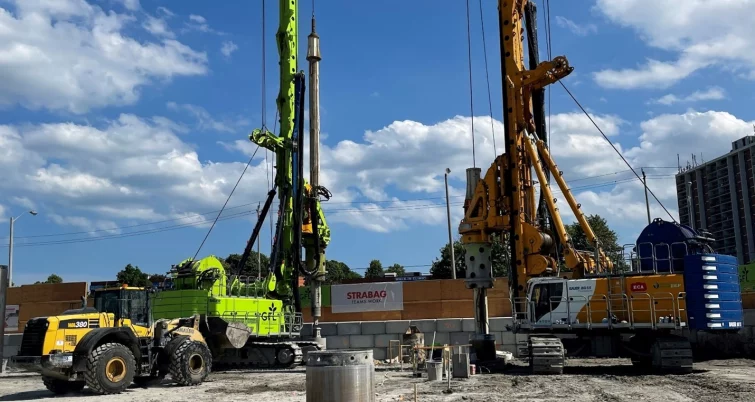Headwall construction begins for Scarborough Subway Extension
Written by Joshua Patel, Metrolinx
Heads up – construction for an important part of the Scarborough Subway Extension, called a headwall, is now underway. Keep reading to find out why this work is so critical for the tunnelling that will start soon.
Scarborough’s three-stop subway extension continues to take shape with crews starting work on the project’s headwalls.
Headwalls are underground support structures made up of a series of concrete columns, called piles, that create a watertight wall around the area of future subway stations and emergency exit buildings.
Construction is now underway for the first headwall just south of the launch shaft site at Sheppard Avenue East and McCowan Road.
Similar to the ones installed at the launch shaft site last summer to prepare for excavation, piles will be drilled into the ground using large drill rigs, which are usually over 33 metres high.
Approximately 19 piles will be required for each headwall.

“As the tunnel boring machine travels underground from the launch shaft site, it will bore through these headwalls, leaving behind the frames for stations and emergency exit buildings we’ll build later,” said Andrej Butala, headwall manager for the project.
Crews will build headwalls at twelve sites along the project route. All of them must be built before the project’s tunnel boring machine, Diggy Scardust, arrives at each location.
At each future station and emergency exit building site, crews will be installing a pair of headwalls to mark where the buildings will start and end. After the tunnel boring machine bores through these headwalls and tunnelling is completed, the successful stations, rail and systems (SRS) contractor will use the headwalls as frames to complete building the future stations and emergency exit buildings.
The headwalls need to go deeper than the future tunnels to ensure that water and soil don’t disrupt the area during tunnelling or construction.
Butala says each pile will be drilled roughly 40 metres underground and a single drill rig will be used at most sites to complete this work.
It will take crews roughly four to six months to build each headwall, and work will also involve utility relocations.

Metrolinx will take a number of steps to keep the community informed before starting construction at each location, including holding meetings, distributing notices and putting up signage. Community members can also sign up to receive construction updates through the project’s newsletter and can review current and past updates at Metrolinx.com/scarboroughsubway.
Metrolinx’s dedicated community relations team is also available to answer any questions or concerns through the project’s 24/7 hotline at 416-202-7900 or through email at [email protected].
Read more about passenger rail.
For brief news updates and commentary, please follow me on Twitter @davidclesterRTS





